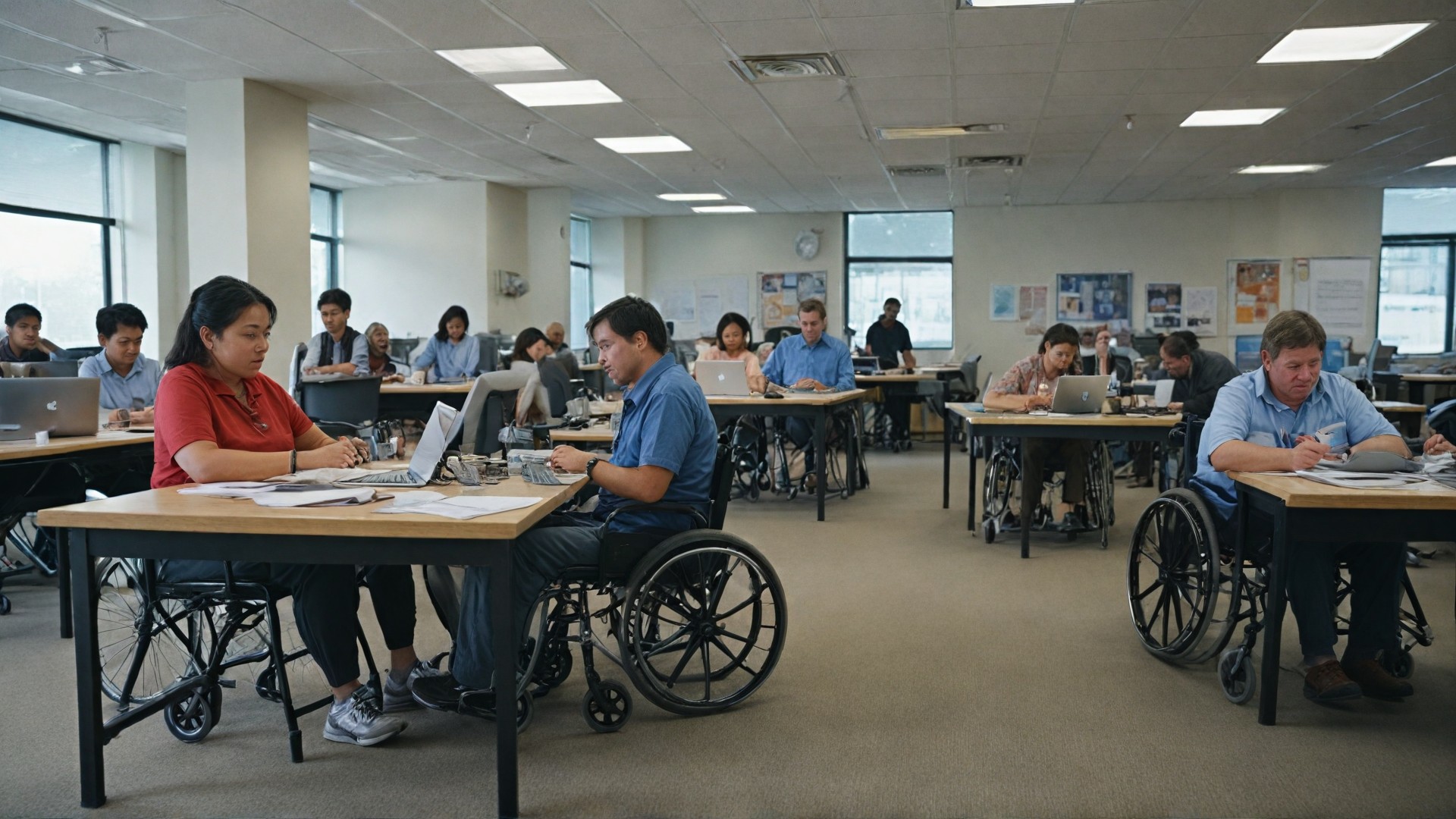In today’s dynamic work environment, accessible employment is more than a trend—it’s a necessity. As businesses strive to build inclusive cultures, the advantages of embracing accessibility are becoming clearer than ever. But what exactly is Accessible Employment, and how does it benefit businesses and society at large?
Accessible employment refers to creating a workplace where individuals, regardless of abilities or disabilities, have equal opportunities to contribute, grow, and succeed. Beyond meeting legal requirements, fostering accessibility is a strategic advantage that transforms businesses from the inside out.
The Core Benefits of Accessible Employment
1. Unlocking a New Talent Pool
Think of the vast potential that lies untapped. Globally, millions of skilled individuals with disabilities are eager to work but face unnecessary barriers. When businesses adopt accessible practices, they tap into a rich vein of talent, creativity, and dedication that enhances their workforce diversity.
“Talent is everywhere; opportunity is not.” – Unknown
By removing barriers, you expand your hiring pool and position your business as a leader in inclusivity.
2. Enhanced Employee Retention
Inclusive workplaces foster loyalty. Accessible Employment who feel valued are less likely to leave. By prioritizing accessibility, businesses demonstrate a commitment to their workforce, creating an environment where individuals feel respected and supported.
3. Improved Workplace Culture
An Accessible Employment workplace cultivates a culture of empathy and collaboration. Teams become more cohesive when everyone feels included, leading to increased productivity and morale.
Business Growth and Accessible Employment
4. Compliance with Laws and Regulations
Accessible Employment isn’t just ethical—it’s legally required in many countries. Compliance avoids costly penalties and opens doors to financial incentives and grants aimed at supporting inclusive practices.
5. Increased Innovation and Creativity
Diverse perspectives lead to unique ideas. Teams composed of individuals with varied backgrounds and experiences often solve problems in unconventional and effective ways.
6. Boosted Brand Reputation
Today’s consumers care about the values behind the businesses they support. Accessible employment sends a clear message: your company is forward-thinking, socially responsible, and committed to making a difference.
Steps to Make Your Workplace Accessible Employment
Conducting an Accessible Employment Audit
Start by identifying barriers. Evaluate recruitment processes, workspace layouts, and employee tools. Small changes, such as Accessible Employment entrances or assistive software, can make a big difference.
Implementing Accessible Employment Practices
Introduce flexible work options, such as remote roles or adjustable hours, and invest in assistive technologies like screen readers or ergonomic equipment. Train your team to ensure everyone understands the value of inclusion.
Conclusion
Accessible Employment isn’t just a good idea; it’s a business imperative. By fostering inclusivity, you unlock potential, drive innovation, and position your business for a brighter, more equitable future. Embrace accessibility today—because the future of work belongs to everyone.
FAQs About Accessible Employment
- What does accessible employment mean?
Accessible employment ensures workplaces provide equal opportunities for individuals with disabilities. - Why should small businesses prioritize accessibility?
Small businesses benefit from diverse talent and increased innovation. - Are accessibility changes expensive?
Not necessarily! Many changes are affordable, and grants can offset costs. - What are the legal requirements for accessible employment?
Laws vary by region but often mandate equal access and accommodations. - How can accessible employment improve workplace morale?
Inclusion fosters empathy, collaboration, and a sense of belonging. - What industries benefit most from accessible employment?
Every industry benefits, especially those requiring creativity and collaboration. - How can I find grants for accessibility improvements?
Research government and nonprofit programs supporting inclusive workplaces. - How do I train staff for an inclusive workplace?
Provide workshops, resources, and ongoing education about diversity and inclusion. - What are some examples of assistive technology for workplaces?
Screen readers, voice-to-text software, and ergonomic furniture are popular tools. - Where can I learn more about accessible employment practices?
Explore resources from disability advocacy groups, government agencies, and HR organizations.
Internal Links:
- Top 10 Job Search Platforms Tailored for Disabled Job Seekers
- Future-Proof Your Job Search: Confidence Tips for Disabled Professionals













